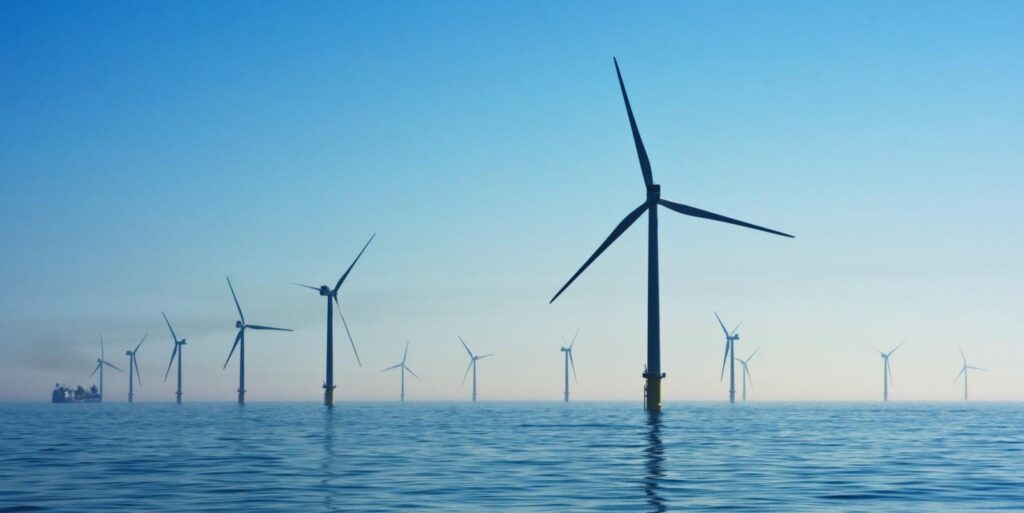Preparation- Ahmed Shawqi Al-Attar
This guide is based on the International Journalists' Network. The original article published on July 31, 2023 can be found here. Link.
It is necessary Paris Agreement Concluded in 2015, the signatory parties work to keep the average increase in the planet’s temperature below two degrees Celsius above pre-industrial revolution levels, and aim to limit the increase to 1.5 degrees Celsius.
according to Intergovernmental Panel on Climate Change (IPCC).The goal of limiting global temperature rise to 1.5 degrees Celsius is still within our reach, but achieving it will not be easy, and requires rapid and exceptional measures, the most important of which is reducing emissions to the maximum possible extent and reaching net zero by 2050.
This requires journalists specializing in climate issues to understand the term “net zero emissions” well, and to learn about ways to track the commitments of countries and companies, alike, to this crucial goal, and verify their effectiveness and their compatibility with achieving the global climate goal that avoids the worst catastrophic scenarios. to climate change.
That's why IJNet has developed this guide to help journalists track and verify international net zero goals.
First, what is “net zero”?
- “Net zero,” “carbon neutrality,” or “climate neutrality” means reducing carbon emissions to the greatest extent, and offsetting what cannot be eliminated.
- Simply put, net zero refers to the balance between the amount of greenhouse gases (GHG) that are produced from human activity, and the amount that is removed from the atmosphere. This can be achieved through a combination of emissions reduction and emissions removal.
- You might ask: Why don't we aim for zero, or gross zero, instead of net zero? Total zero would mean stopping all emissions, which is not realistically achievable in all sectors of our lives and industry. Even with every effort to reduce them, some necessary emissions will still remain.
- A “net zero pledge” means that a particular country or company will reduce emissions but not to absolute zero; Instead, some necessary, uncontrollable emissions will continue, but will be eliminated by offsetting measures that absorb or remove carbon dioxide from the atmosphere, so the net result will be zero emissions.
- Most governments and companies, or nearly 80% of the global economy, are committed to reaching net zero by 2050. The role of the press is to verify these commitments, are they on the right track or not?
- Net zero is sometimes used to launder reputation, or what we call “climate laundering” or “greenwashing,” which refers to verbal promises by governments, companies, or banks that claim to be working to solve the crisis, but their practices on the ground do not live up to the required level. Especially with regard to the energy and forestry sectors.
- In general, net zero pledges should be written about with a degree of skepticism, because 2050 is far enough away. Talk is easy, but implementation is difficult. These claims are only credible if they include real actions to significantly reduce emissions over the next 10 years, and offset necessary emissions.
- “Net zero” is not necessarily an evasion to evade strict climate measures, although some do use it to evade, but the evasion mostly occurs with regard to compensation, which is not implemented as required.
- Compensation occurs through techniques to remove emissions from the atmosphere. Examples of these compensatory measures include: planting trees and restoring wetlands and forests; They both absorb carbon dioxide from the air through photosynthesis.
- For example: A company, institution, or country has pledged to implement the necessary offsets to offset its necessary emissions. Has it actually planted the amount of trees it pledged? Did she stick to her schedule? Have wetlands really been restored?
- Scientists say this timeline is necessary to reach 1.5°C. The promise that emissions will end by 2050 can only be achieved if actual emissions are reduced by half by 2030.
- To test the validity of pledges, journalists should check whether these commitments carry a real action plan to cut emissions in half by 2030, or not?
Second, investigate countries' net-zero commitments
More than 70 countries, including the largest emitters, have set a net-zero target, covering about 76% of global emissions.
situation Climate Action Tracker, an independent scientific project that tracks and measures government climate action in accordance with the Paris Agreement, methodology To assess climate action tracking in relation to national net zero targets, it relies on ten key elements of good practice that governments should implement.
Journalists can track climate action in a specific country, or across multiple countries, by checking countries' commitment to these 10 elements.
- Target year
- To avoid the most severe climate change scenario, global carbon dioxide emissions must reach net zero around 2050, the Intergovernmental Panel on Climate Change says.
- For a target to be useful and effective, a country should declare a specific target year or short time period (for example, between 2045 and 2050), and avoid vague timelines, such as “in the second half of this century.”
- Has your country set a specific target year? Are the target years aligned with global decarbonisation trajectories? Is the country aiming to achieve net zero emissions as soon as possible?
- Remember, countries with greater historical responsibilities, significant financial resources, and more advanced carbon removal and storage technology should set target years before 2050.
- Emissions coverage
- More transparent and comprehensive net zero targets cover all greenhouse gases - carbon dioxide, methane, nitrous oxide and others - within all economic sectors. Some governments set only sub-goals. New Zealand, for example, excludes methane emissions from its target, so where does your country stand?
- Current net zero targets are supposed to cover greenhouse gases emitted within a country's national borders and are consistent with national greenhouse gas inventories. check it out.
- There is a risk that net zero targets will lead to emissions leakage. This may happen, for example, when a country decides to close domestic coal-fired power stations and import fossil fuel-based electricity from neighboring countries; Or outsourcing industrial operations to other countries. check it out.
- Aviation and international shipping
- More transparent and comprehensive net zero targets cover emissions from international aviation and shipping, referred to as “international bunker” emissions, which are assessed separately from emissions from economic sectors and greenhouse gases.
- Is your country actively working to reduce these emissions to net zero? Does it develop alternative means of transportation, alternative fuels, and improve the efficiency of aircraft and ships?
- Check whether your country's net zero target covers emissions from international aviation and shipping on all routes, one sector is not covered, the target covers emissions from international bunkers within a specific region only, or the target explicitly excludes any emissions from international aviation and shipping.
- Reductions or removal outside special boundaries
- More transparent and comprehensive net zero targets explicitly state that a country will reach net zero emissions within its borders.
- Some countries are delaying the reduction of their domestic emissions and rely on reductions or eliminations outside their borders to eventually meet their net-zero target, hindering the achievement of global net-zero emissions.
- Check whether the target government has explicitly pledged that it will reach net zero emissions within its borders or not?
- Will it rely solely on off-limits removals or reductions? Do you prioritize external discounts at the expense of internal ones?
- legal situation
- Net zero targets vary in terms of their legal status: while some are set out in law (such as the UK), which is of course preferable, some include them in a policy document (such as Costa Rica or South Korea); It is a less favorable status, sometimes only announced verbally by an official (Japan or China as of June 2021), and is the lowest status.
- Check the following: Is your country's net zero target set out in law or in proposed legislation or policy document? Or just an announcement from the Prime Minister or his equivalent?
- Separate objectives for reduction and elimination
- The most comprehensive and ambitious net zero targets include separate sub-targets for reducing and eliminating emissions.
- Governments must set a separate target for removals, determine what measures they will implement to achieve this goal, and determine how risks related to, for example, impermanence and degradation of biodiversity will be managed.
- Does your government have separate targets for emissions reductions and removals?
- Review process
- The more comprehensive and ambitious net zero targets are complemented by regular, legally binding reviews of the target and progress towards achieving it.
- Do your country-specific review processes include regular and ongoing tracking of progress against the target and review of the target itself?
- Carbon dioxide removal
- To achieve net zero, governments need to make transparent assumptions about the role of the land use, land use change and forestry sector LULUCF, and other technological options for carbon dioxide removal including capturing carbon directly from the atmosphere and storing it.
- These assumptions must be accompanied by transparent planning, tracking and monitoring of carbon storage requirements. Check your country's situation in this regard.
- Comprehensive planning
- The more comprehensive and ambitious net zero targets are complemented by a comprehensive planning process and actionable short and medium-term actions to reach net zero in the long term.
- Specifically, governments need to align short-term policies with the net-zero target and set specific interim targets for each sector. Has your government determined these plans and procedures?
- Clarity in the fairness of the goal
- More comprehensive and ambitious net zero targets should be accompanied by an explanation of the fair contribution of the net zero target to the global goal of limiting warming to 1.5°C above pre-industrial levels.
- For example, it is fair for the EU to commit to almost net zero around 2030, but achieving this domestically would likely be impractical, and the EU would not commit to it, but it is obliged to state and acknowledge it.
- Has your government explained in its plan how it will bridge any gap between the just goal and the realistic and ambitious goal?
Third, verify net zero commitments of companies and non-governmental organizations
At the United Nations Climate Conference (COP27) in Sharm El-Sheikh, Egypt, the United Nations High-Level Panel of Experts launched, a report “Integrity Matters: Net Zero Commitments by Corporations, Financial Institutions, Cities and Regions.”
The report includes 10 recommendations, serving as a guide for how to make credible and accountable net zero pledges from businesses, and details what non-state actors should consider during each stage of their progress towards net zero.
Journalists can use these recommendations to check the extent to which companies and non-governmental organizations are committed to net zero goals.
Check the following:
- Has the company or organization made a net zero pledge publicly? Does it represent a fair share of the global climate mitigation efforts needed, and contain interim targets (including 2025, 2030 and 2035 targets)?
- Is it consistent with the net emissions modeling pathways of the Intergovernmental Panel on Climate Change or the International Energy Agency?
- Is it in line with the goal of limiting warming to 1.5°C and with global emissions reduced by at least 50% by 2030?
- Does the company or organization set short, medium and long-term goals to reduce emissions and reach net zero?
- Does it have relative emissions reduction targets across its value chain that are consistent with internationally approved model pathways and aligned with the 1.5 degree target of cutting half of global emissions by 2030?
- Are companies prioritizing urgent and deep emissions reductions across their value chain?
- Are high integrity carbon credits used in voluntary markets post-mitigation in the value chain without counting towards temporary emission reductions through the net zero pathway?
- Does the company or organization have an executable transition plan that indicates actions that will be taken to achieve all objectives and is aligned with governance structures, incentives, capital expenditures, R&D, skills, human resource development and public advocacy and also supports a just transition? Do you update transition plans every five years and report progress annually?
- Do the pledges include specific goals related to phasing out fossil fuels and expanding renewable energy? Is it a complete transition away from fossil fuels towards renewable energy or through transferring assets to new owners?
- Do the company or organization's external policies push for positive climate action or push for the opposite?
- Do companies commit to avoiding conversion of remaining natural ecosystems and eliminating deforestation and peatland loss by 2025 and remaining natural ecosystems by 2030?
- Do financial institutions have a policy not to invest in or finance businesses linked to deforestation?
- Are companies and institutions implementing the necessary emissions offsets as they have pledged?
- Do organizations annually disclose greenhouse gas data, their net-zero goals, plans and progress toward those goals, and other relevant information?
- Does the organization or company enter into international multilateral deals with governments, financial institutions or other international companies with the aim of significantly expanding investments in the clean energy transition in developing countries?
Remember: Major companies publish their net zero plans and related updates on their official websites. Check the website of your company or organization and look for sustainability and climate plans within it.
Fourth, tools and resources that help you verify and collect information and data
science based targets: The Science-Based Targets Initiative (SBTi) provides a complete database on nearly 51,000 major companies and organizations around the world, through which you can find out where any company or organization stands on the net zero goal.
ENERGY & CLIMATE INTELLIGENCE UNIT: Open source that tracks countries that have pledged to net zero, and provides a wealth of analysis and data on carbon neutrality pledges.
Climate watch: The platform provides a net zero goal tracker, and related data and documentation. Through the map, you can explore countries that have adopted the net-zero goal and click on a country to see its climate profile, which includes national planning documents, emissions volumes, and other important information for each country.
International Energy Agency IEA database: It provides a tool for accessing national plans and policies in all countries of the world, which include net zero goals.
Net Zero TrackerAn open source tracker and database that collects, evaluates and presents the volume and quality of net zero pledges by countries, companies and other entities.
:MSCI Net-Zero This tracker provides a regular report, every 3 months, on the progress made by the world's listed companies towards reducing climate change risks and the net zero goal.
OXFORD NET ZERO S: is an interdisciplinary research initiative founded by the University of Oxford to track net zero and climate action.
NET ZERO COMPANY BENCHMARK: This tool provides an assessment of the net zero targets of the world's largest greenhouse gas emitters.
STI policies for net zero: It is a collaboration between the European Commission, the International Energy Agency and the OECD to provide information on hundreds of science, technology and innovation policies that explicitly support the transition to net zero.
Our World in Data: This famous database provides a huge amount of data that answers most of the questions we asked earlier about verifying net zero.
Main image licensed for use on Unsplash via Nicola Doherty.





